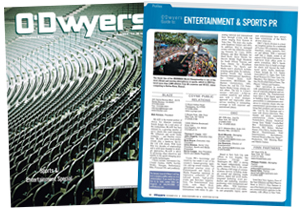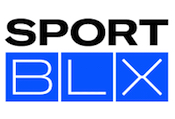 According to Plunkett Research Ltd., the sports industry’s current value in the United States stands at an estimated $485 billion. And that industry is guaranteed to grow, as media conglomerates continue driving content across an array of existing and new platforms.
According to Plunkett Research Ltd., the sports industry’s current value in the United States stands at an estimated $485 billion. And that industry is guaranteed to grow, as media conglomerates continue driving content across an array of existing and new platforms.
The bond between sports and its fans is both inseparable and constantly evolving. Brands have always sought to partner with potential superstars, but with that decision comes risk. Following are a few key factors when considering athlete alliances.
Age
The decision to partner with an athlete is always a calculated risk, because there’s no guarantee that someone will fully live up to his or her potential. Some do, and others transcend their expectations. Targeting young talent is enticing, as many companies hope to evolve new products alongside a player who will grow with them.
Recent history indicates that signing young athletes sometimes pays off incredibly, or fails horribly. For example, in 2004, Adidas signed 18-year-old basketball phenomenon Sebastian Telfair. Telfair was notorious for drawing celebrities and tastemakers to high school gyms to watch him play. Upon declaring for the 2004 NBA draft out of high school, Adidas agreed to an endorsement contract worth $15 million.
|
|
Success in a young athlete is not guaranteed, and companies must accept the risk in order to avoid missing out on the next “big thing.” Unfortunately, Telfair did not add much credibility, as he ultimately bounced around the NBA and even had a brief stint in China. Adidas took a risk on Telfair because a year earlier its main competitor, Nike, signed another 18-year-old wunderkind named LeBron James. In a transition period looking to replace Michael Jordan, the company signed James to a $90 million, seven-year contract out of high school in 2003. The gamble paid off for Nike, who still backs James, although James has changed teams over the years. According to Sports One Source, Nike sold over $300 million LeBron signature sneakers in 2012 alone.
Performance
The average career of an NFL player is 3.2 years. Moreover, society shuffles through athletes and trends quickly, so success can be even more short-lived. Brands must strike when the iron is hot in order to maximize marketing reach and effectiveness. High performance typically leads to winning, and consumers identify with winners. When brands are affiliated with a specific athlete, that athlete’s winning reputation carries over. The marketability of a winner is usually synonymous among quarterbacks, especially those who lead their teams to Super Bowl championships.
Seattle Seahawks quarterback Russell Wilson led his team to a Super Bowl championship in his second NFL season, becoming one of the league’s most marketable and popular players. Wilson’s success on the field has transformed this mid-round draft pick into a national icon, facilitating his partnerships with American Family Insurance, Bose, Braun, Duracell, Microsoft, Alaska Airlines and others. The Harrow Sports Ventures/ MVPindex Power 100 ranks him as the second most influential athlete in sports, behind only LeBron James. Winning a Super Bowl as a quarterback changes a player’s career and legacy, rewarding the player with unparalleled credibility. There are only so many champions, and you never know who will win or lose in sports. If companies can identify champions, those athletes will catapult the brand to new heights.
Influence and social media presence
Technology continues to evolve at a rapid pace. New media is vital to all athlete marketing, promotions and sponsorships. Social media provides fans a chance to connect with athletes on a direct, personable level, and grants companies access to their customers. According to Navigate Research Marketing and Public Relations Manager Julie Frank, “sports fans that see a brand message on social media are 78% more likely to have a positive perception of it.”
When selecting an athlete to serve as an endorsee, it’s imperative to select someone who’s influential and actively engages his or her followers on social media. Athletes have massive followings; some athletes’ Twitter followings are twice the size of Fortune 500 companies. By partnering with athletes, brands have the opportunity to reach a new target market to promote and spread awareness of their campaigns and programs. In early 2014, former NFL Quarterback Tim Tebow partnered with telecommunications company T-Mobile. The partnership centered on the “No Contract, No Problem” Super Bowl commercial. During the game, T-Mobile launched a social media activation where Tebow took over the brand’s Twitter account and promoted the T-Mobile commercials to his 2.75 million followers. This not only made the company a trending topic worldwide, but also increased T-Mobile’s Twitter following by 110%.
Character
Does the athlete fit the brand? Does the athlete use the products? Does the athlete connect with the target market? These questions are essential. When athletes or other celebrities represent brands that they stand behind, it underscores an organic message for the target market. One example is the partnership between Derek Jeter and Movado. Jeter — the decorated, recently retired New York Yankees shortstop — began working with the luxury watch brand in 2006 as spokesperson for its Series 800 line of high-end sports watches. Aside from complementing the qualities of the timepiece, Jeter appeals to a market that Movado aims to reach. Once athletes sign endorsement contracts, not only are their decisions and actions a reflection of themselves, they are also reflections of the brand. Since endorsement deals are a significant investment, a thorough assessment of the athlete’s character and background is compulsory. Movado did its diligence during the selection process — they got it right.
* * *
Hayes Grooms IV is Vice President of the Sports & Entertainment Practice at French/West/Vaughan.



 Brunswick Group handles Endeavor, which has launched a review of strategic alternatives at the sports and entertainment combine as CEO Ari Emanuel believes Wall Street undervalues his company.
Brunswick Group handles Endeavor, which has launched a review of strategic alternatives at the sports and entertainment combine as CEO Ari Emanuel believes Wall Street undervalues his company. MWWPR has been retained by SportBLX to lead communications for the launch of a platform that allows fans and investors to own shares of unique assets in sports.
MWWPR has been retained by SportBLX to lead communications for the launch of a platform that allows fans and investors to own shares of unique assets in sports. DraftKings is betting on Donald Trump-connected Ballard Partners to help it achieve its economic development and regulatory relief goals in Washington. (1 reader comment)
DraftKings is betting on Donald Trump-connected Ballard Partners to help it achieve its economic development and regulatory relief goals in Washington. (1 reader comment) On November 15, “Ford v Ferrari” will roar into theaters, packing a publicity boost for two great global auto brands right on the marquee. Here's a Top Ten list of films in which a brand played a starring role. (1 reader comment)
On November 15, “Ford v Ferrari” will roar into theaters, packing a publicity boost for two great global auto brands right on the marquee. Here's a Top Ten list of films in which a brand played a starring role. (1 reader comment) Steven Spielberg’s Amblin Partners has brought on Dan Berger as executive vice president and head of communications.
Steven Spielberg’s Amblin Partners has brought on Dan Berger as executive vice president and head of communications.


 Have a comment? Send it to
Have a comment? Send it to 
No comments have been submitted for this story yet.